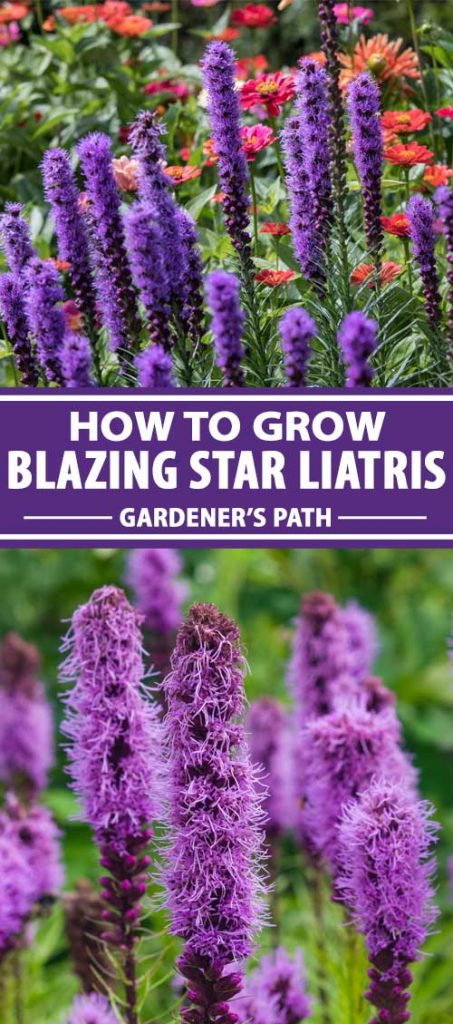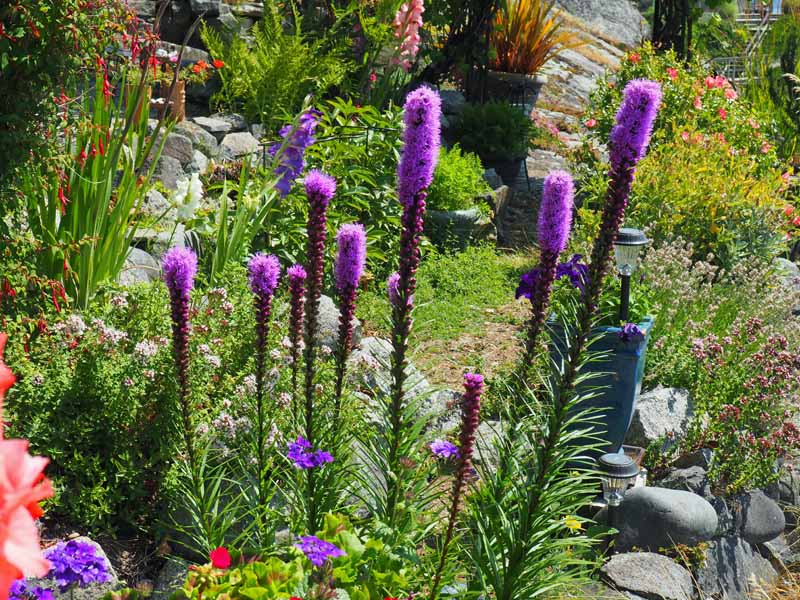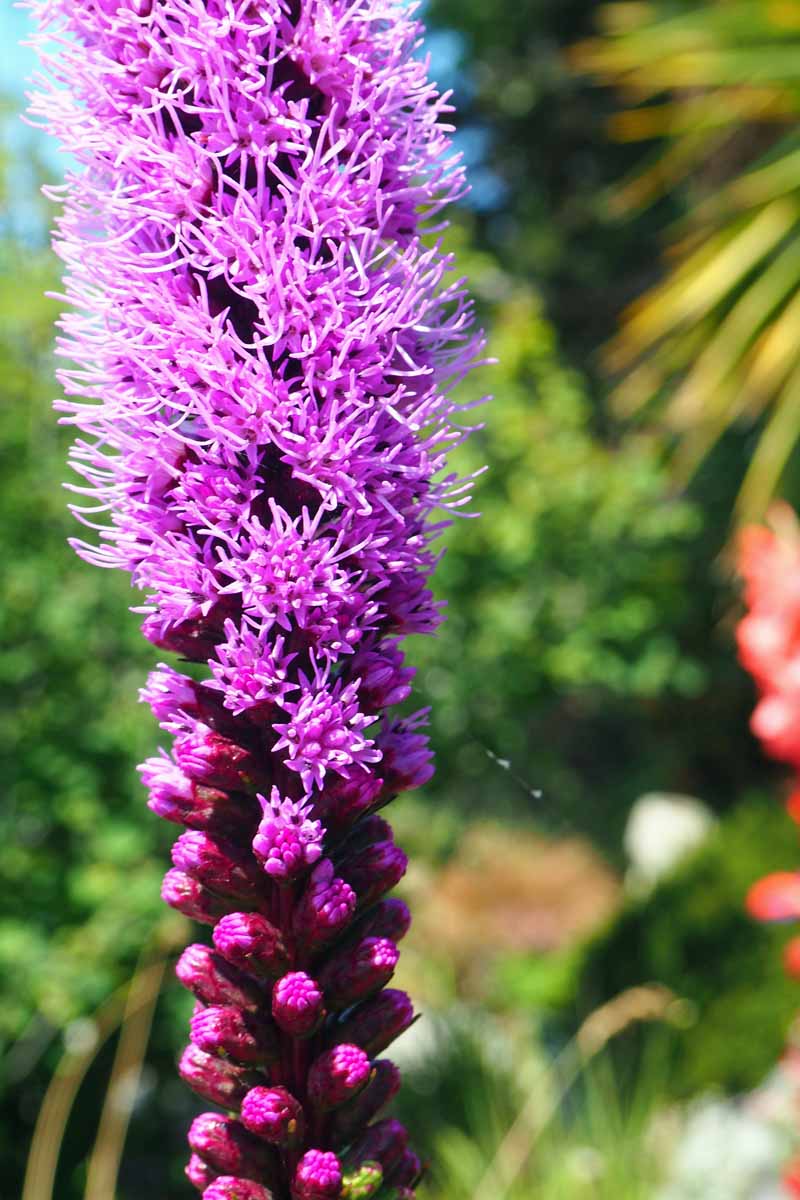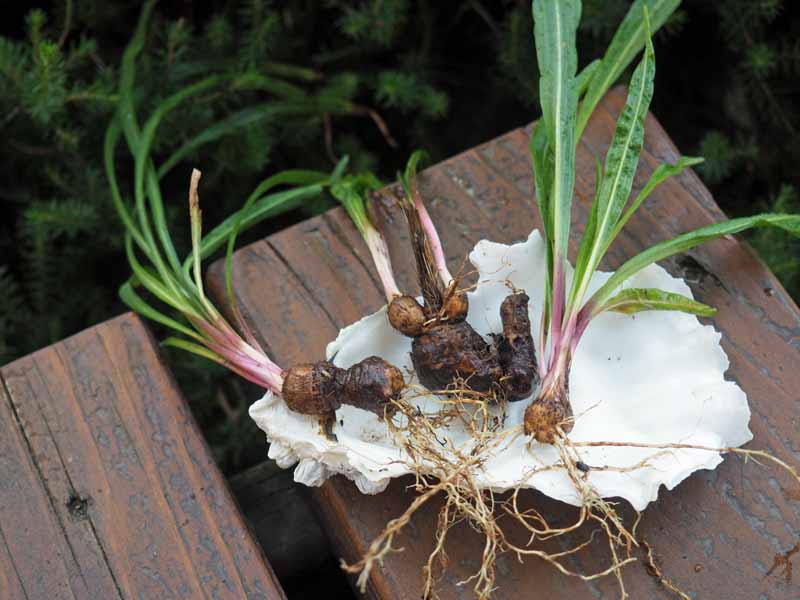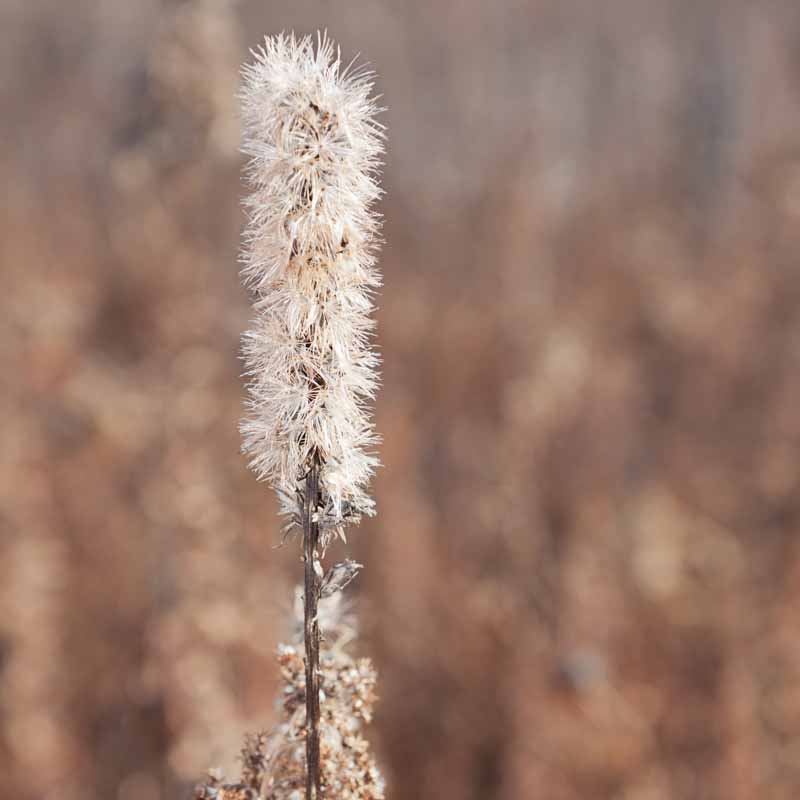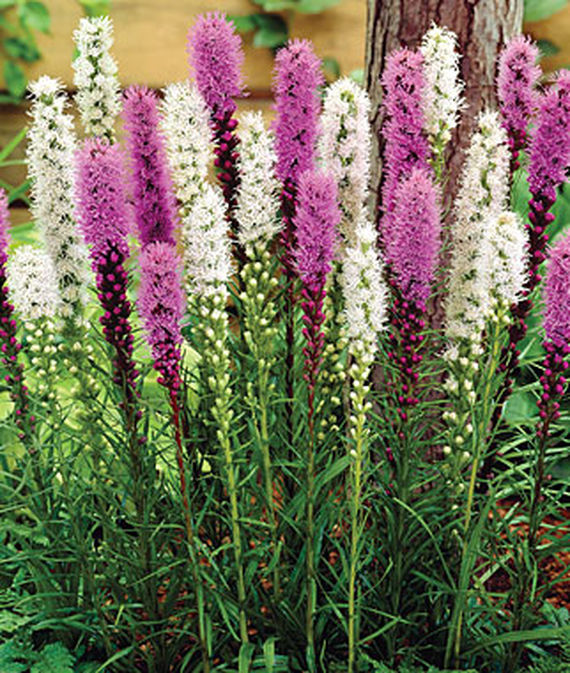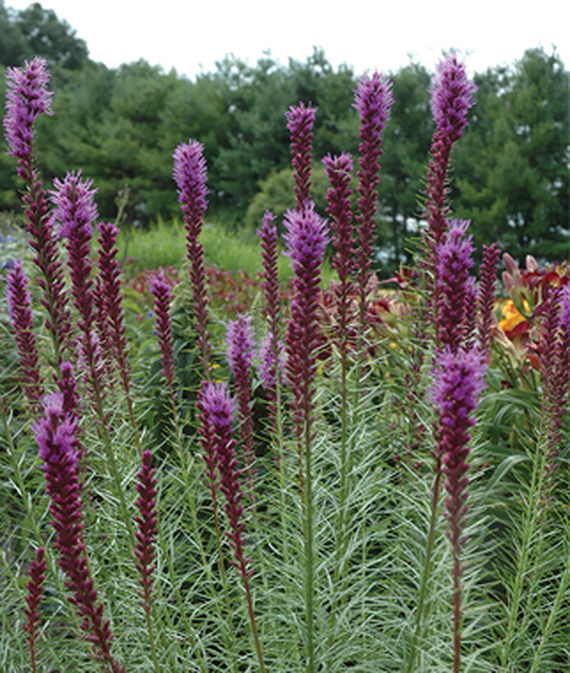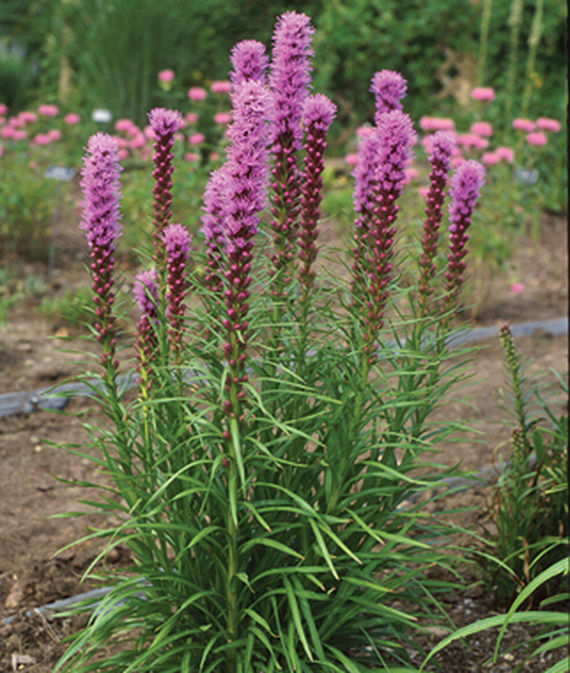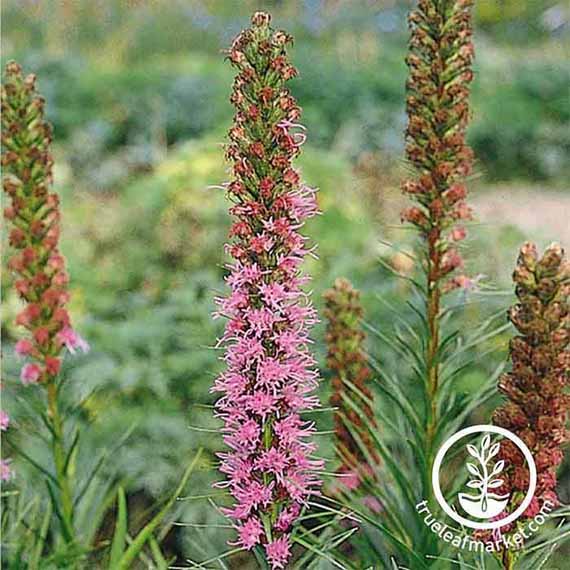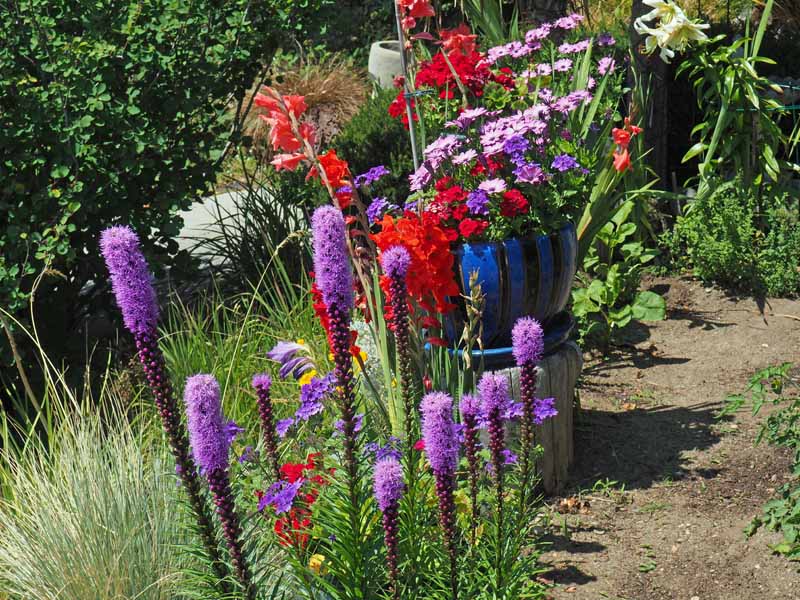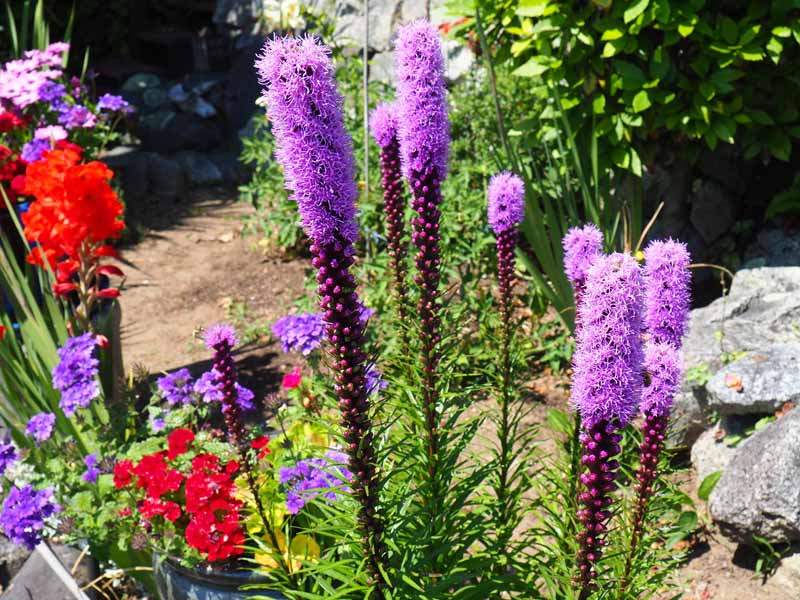After the exuberant growth of spring and early summer, our gardens can slow down and sag a bit, especially when extended spells of hot weather set in. As the low moisture and high heat conditions continue, grasses go into dormancy, new foliage slows to a crawl, and many plants conserve energy by restricting blooms – leaving gardens looking tired and spent. We link to vendors to help you find relevant products. If you buy from one of our links, we may earn a commission. By planting native species, such as L. spicata. Commonly called blazing star, gayfeather, or prairie star, L. spicata is a versatile North American plant with plenty of ornamental allure. Noted for their tall, stately plumes of amethyst or white and delicate grass-like foliage, this durable wildflower appeals to the beginner and experienced gardener alike. Easy to grow and propagate, it’s a low-maintenance gem that blazes in the dog days of summer while other plants wilt from the heat. Join us now as we look at how to add this pretty prairie stalwart to your garden!
Cultivation and History
Native to the prairies and meadows of Eastern North American, L. spicata is a hardy perennial that produces narrow, grass-like leaves and tall spikes of vibrant purple, bottlebrush flowers. Blooming from mid-summer to autumn, this clump-forming perennial belongs to the Asteraceae, or aster family, and the Liatris genus is composed of approximately 40 species. Plants grow from a corm, forming large, tuberous roots that are hardy in Zones 3-9. In spring, delicate grassy foliage is followed by sturdy stalks topped with striking, feathery flowers of vibrant purple or white. Long flower heads are comprised of multiple, mini florets that bloom from top to bottom, and cover about the top third of each flower stalk. Growth is upright, and a full stand takes up little garden space. Flower stems rarely need staking unless grown in overly moist, rich soil. The fine textured foliage remains attractive all summer. In the fall, leaves and stalks turn a rich orangey bronze with wheat-colored seed heads. Larger clumps benefit from division every few years to prevent crowding and dead spots forming in the center. A favorite of florists, it’s long-lasting as a cut flower and makes an attractive addition to containers, cutting gardens, flower beds, and naturalized or informal plantings. The distinctive flower spikes grow 1 to 5 feet tall and are magnets for numerous pollinators including native bees, butterflies, and hummingbirds. Local and migrating birds will also visit as they enjoy the fruit of fall-ripening seeds. Roots of L. spicata have long been used by Native Americans for a variety of ailments including the treatment of abdominal pain, colic, snake bite, and swelling.
Propagation
Blazing star can be propagated from division of corms and tuberous roots, and from seed.
By Division
By Seed
L. spicata can also be grown from seed. Seeds are viable for less than 12 months and can be collected in the fall and direct sown into the garden right away – if you have cold winters. They need extensive cold exposure in a moist environment to germinate the following spring. If you don’t have time to plant in place, sow in flats and leave the flats outdoors over the winter for germination and spring planting. If your winters are mild, collect seeds in the fall and store in a cool, dry spot. Approximately 12 weeks before direct sowing outdoors, mix seeds with moist vermiculite, peat, or sand in a resealable bag. Store in the refrigerator until you’re ready to plant. Plant cold-treated seeds outdoors when the weather has warmed to around 65°F.
Alternatively, after 12 weeks of cold, pot up seeds into 4-inch containers to sprout. Use a potting mix of equal parts moist sand, compost, and vermiculite and lightly spread the seeds on top. Cover with a bare dusting of potting mix. Place in a cool, bright location, water regularly, and plant seedlings into the garden after the last frost date for your region. Plants started from seed will bloom in their second year of maturity.
Best Growing Conditions
Like a true prairie belle, cultivation of L. spicata is straightforward. Most cultivars prefer full sun, or some light shade, and well-drained soil of lean to medium fertility. Good drainage is a must, as soggy conditions can cause root rot. Plant in cool spring weather to allow young plants to get established. Drought tolerance in one of blazing star’s highly desirable traits, as the water-retentive corms and tuberous roots can sustain them through dry periods. And while they need well-draining soil, they can happily tolerate more moisture than many other perennials, making them suitable for rain gardens as well. Plants grown from tuberous divisions will bloom in the first year of growth, while those started from bulbils can take two years to flower.
Growing Tips
Blazing star is a tough plant that thrives naturally in a harsh prairie environment. But in dry weather, new plantings should be watered weekly until a strong root system is established. As with all bulbs and corms, avoid over-watering. After the first few months, your Liatris will need little attention. Relatively drought tolerant, they’re mostly pest and disease resistant, and deer tend to ignore them as well. A good choice to attract pollinators, L. spicata is rich in nectar and pollen. Plant some in open areas to broadcast their appeal to flying insects. Ripe seedheads provide a rich source of food for birds such as goldfinches and migrating songbirds.
Pruning and Maintenance
Foliage and stems can be cleaned up any time after dying and turning shades of bronze, brown, and orange. But they add a nice touch to the fall and winter garden and can be left in place until spring cleanup. In early spring, remove any vegetative debris and side dress established clumps by working in organic matter such as mature compost, humus, or manure.
Managing Pests and Diseases
Insect problems are rare, but L. spicata are used as food plants by the larvae for several species of flower moths, including the rare glorious flower moth (Schinia gloriosa), and the bleeding flower moth (S. sanguinea). Both of these feed exclusively on plants from the Liatris genus.
‘Blazing Stars Mix’
‘Blazing Stars Mix’ ‘Blazing Stars Mix’ is a blend of densely packed purple and white flower heads, combining white and deep, blue-purple flowers. Hardy in Zones 3-10, this bold combo grows 24 to 36 inches tall and blooms from mid-summer to fall. Pick up a package of 10 large bulbs online from Burpee.
‘Floristan Violet’
‘Floristan Violet’ offers multiple stalks of amethyst colored plumes that begin blooming in early summer.
‘Floristan Violet’ Hardy in Zones 3-9, this heat and humidity-resistant cultivar shines in the summer garden. Order bare root plants online from Burpee.
‘Kobold’
‘Kobold’ is a popular choice in a more compact form.
‘Kobold’ Hardy in Zones 3-9, this cultivar grows 18 to 36 inches in height and handles heat and humidity with ease. Bare root plants can be ordered online from Burpee.
Other Choices
Home Depot also offers an online selection with a 12-pack of ‘Blazing Star Mixed’ bulbs, combining white and purple flowers. Hardy in Zones 3-9, mature plants reach a height of 48 inches. Seeds of L. aspera ‘gayfeather’ can also be purchased online, like this 500-gram packet that’s available from True Leaf Market. Sow indoors or out, and flowers will appear in their second year.
‘Gayfeather’ Other species, like pinkscale blazing star (L. elegans) and meadow blazing star (L. ligulistylis) may be available for home cultivation through local botanical gardens, specialty mail-order nurseries, and wildflower centers. Infestations are not usually problematic, and larvae can be hand-picked or blasted off with a strong spray from the hose. Blazing star can be subject to some fungal diseases, including leaf spot and powdery mildew. Remove any infected foliage, reduce watering, and allow the top 2 inches of soil to dry out. Divide and respace if necessary. Adequate spacing of plants allows sufficient sunlight and air circulation, which helps keep fungi problems to a minimum.
Best Uses in the Garden
Liatris makes a tall, eye-catching statement in flower beds, containers, cutting gardens, and naturalized settings. A valuable addition to perennial gardens, these plants provide a reliable vertical contrast to mounded or broad-leaved plants like hostas and are equally at home in the meadow or naturalized areas. The purple flowers contrast nicely with any orange or yellow-flowered plants such as black-eyed susans (Rudbeckia hirta), coreopsis, daylilies (Hemerocallis), or marigolds (Tagetes). Or for a bold sweep of color, mix with other purples and vibrant reds from plants like Gladiolus, Osteospermum, Pelargonium, and Verbena. The elegant, wand-like flowers bloom in shades of amethyst, pink, or white. Stunning and long-lasting in summer flower arrangements, they’re a must-have in the cutting garden. L. spicata also has the presence to stand alone as a specimen plant and is particularly effective in large stands and drifts. And as an indigenous species, blazing star is robust enough to hold its own when planted in meadows or naturalized settings with other wildflowers. Rich in nectar and pollen, the flowers attract a wide range of butterflies, making them right at home in the butterfly garden. They make a handsome companion for ornamental grasses and sedges. And in casual gardens, they mix well with other summer favorites like butterfly weed (Asclepias tuberosa), blanket flower (Gaillardia), and coneflower (Echinacea). Dried liatris makes an attractive addition to dried flower arrangements as well. To dry, harvest the stalks when about 1/2 to 2/3 of the flowers are blooming. Hang upside down in a cool, dry location for 3 to 4 weeks. Or use a flower desiccant like silica gel to dry and preserve.
Liatris Quick Reference Growing Chart
Pride of the Prairies
Now that you know about the stellar properties of this pride of the prairies, do you think you might add a stand of blazing star to your garden? And be sure to check our articles on other indigenous North America perennials that thrive in hot summer conditions.
New England Aster (Symphyotrichum novae-angliae) Honeysuckle (Lonicera) Coneflower (Echinacea)
All of these plants are winners with their easy-to-care-for habits and long-lasting color! Photos by Lorna Kring © Ask the Experts, LLC. ALL RIGHTS RESERVED. See our TOS for more details. Product images via Burpee and True Leaf Market. Uncredited photos: Shutterstock.

